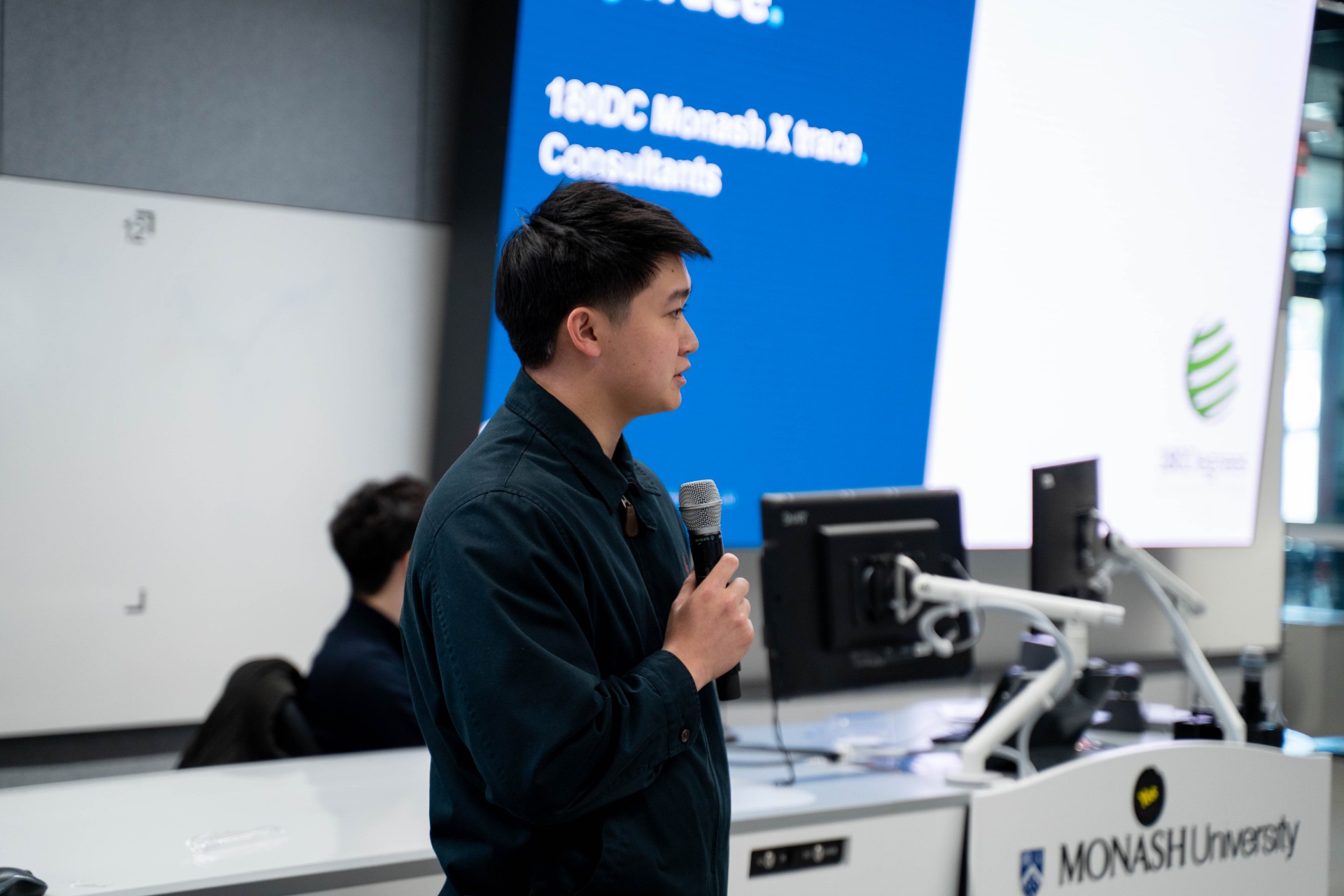Ready to turn insight into action?
We help organisations transform ideas into measurable results with strategies that work in the real world. Let’s talk about how we can solve your most complex supply chain challenges.

In today’s fast-evolving business landscape, supply chain and procurement functions are no longer just operational necessities—they’re strategic drivers of growth, resilience, and competitive advantage. For CEOs, CFOs, CIOs, and CTOs across Australia and New Zealand (ANZ), the pressure is on to modernise these critical areas with cutting-edge technology. But where do you start? How do you bridge the gap between where you are now and where you need to be? That’s where Trace Consultants steps in.
At Trace Consultants, we specialise in guiding ANZ organisations through supply chain and procurement technology transformation. From assessing your current state and identifying gaps to developing a robust business case, defining functional and non-functional requirements, scoping the market, crafting a go-to-market strategy, and managing implementation and change, we’ve got you covered. In this article, we’ll walk you through how our expertise can help your organisation unlock value, reduce costs, and future-proof your operations.

The Strategic Imperative for Supply Chain and Procurement Transformation
Before diving into how Trace Consultants can help, let’s set the scene. The ANZ region faces unique challenges—geographical isolation, complex supply chains, and a volatile global market. Add to that the rapid pace of digital disruption, and it’s clear why CEOs are rethinking their supply chain strategies, CFOs are scrutinising procurement spend, CIOs are pushing for tech integration, and CTOs are championing innovation.
Procurement and supply chain technology transformation isn’t just about adopting the latest tools—it’s about aligning your operations with your strategic goals. Whether you’re in mining, retail, healthcare, or manufacturing, optimising these functions can deliver significant cost savings, improve supplier relationships, and enhance resilience against disruptions. But achieving this requires a structured approach, and that’s where Trace Consultants excels.
Step 1: Current State & GAP Assessments – Knowing Where You Stand
The first step in any transformation journey is understanding your starting point. At Trace Consultants, we conduct comprehensive current state and gap assessments to give you a clear picture of your supply chain and procurement operations.
For CEOs, this means gaining visibility into how your supply chain aligns with your broader business strategy. For CFOs, it’s about pinpointing inefficiencies that inflate costs. CIOs benefit from an IT-focused lens that evaluates how your current tech stack supports—or hinders—procurement processes, while CTOs get insights into innovation gaps that could be bridged with emerging technologies like AI or IoT.
Our approach is pragmatic and data-driven. We benchmark your performance against industry standards, assess your processes, and identify risks. For example, we’ve worked with a mining organisation in ANZ to evaluate its supply chain risks, delivering a roadmap to stronger supplier relationships and improved supply continuity—outcomes that directly impact the bottom line.
Step 2: Business Case Development – Justifying the Investment
Once we’ve mapped your current state and gaps, the next challenge is building a compelling business case. This is where CFOs and CEOs sit up and take notice. A technology transformation isn’t cheap, and stakeholders need to see a clear return on investment (ROI).
Trace Consultants collaborates with your leadership team to develop a business case tailored to your organisation’s goals. We quantify the benefits—think cost reductions, efficiency gains, and risk mitigation—and align them with your financial and strategic priorities. For instance, we’ve partnered with a healthcare provider to show how a procurement overhaul could deliver substantial savings while enhancing service delivery, winning buy-in from the C-suite.
Our business cases don’t just focus on numbers; they tell a story. We highlight how technology can transform your supply chain into a competitive advantage, making it easier for CIOs and CTOs to advocate for the necessary IT investments. Whether it’s reducing procurement cycle times or enhancing supply chain visibility, we make the case airtight.
Step 3: Functional Requirements & Non-Functional Requirements Definition – Setting the Foundation
With the business case approved, it’s time to define what your new system needs to do. This is where functional and non-functional requirements come into play, and it’s a critical step for CIOs and CTOs tasked with ensuring technology meets business needs.
Functional requirements outline what the system must do—think streamlined sourcing, real-time inventory tracking, or automated supplier management. Non-functional requirements cover how it should perform, such as scalability, security, and user experience. At Trace Consultants, we bring decades of supply chain and procurement expertise to the table, ensuring these requirements are both practical and forward-thinking.
For example, we’ve collaborated with an ANZ retailer to define requirements for a procurement platform that integrated with their existing SAP system. The result was a solution that improved supplier collaboration and reduced procurement costs. By aligning these requirements with your strategic goals, we set the stage for a technology solution that delivers real value.
Step 4: Market Scoping – Finding the Right Solutions
The tech market is flooded with options—AI-driven analytics, blockchain for traceability, cloud-based procurement platforms. How do you choose what’s right for your organisation? Trace Consultants takes the guesswork out of market scoping.
We analyse the vendor landscape, assess solutions against your defined requirements, and shortlist options that fit your budget and goals. For CIOs and CTOs, this means a tech stack that integrates seamlessly with your existing architecture. For CEOs and CFOs, it’s about ensuring the investment aligns with long-term growth and cost objectives.
The technologies we evaluate span a wide range, each addressing specific supply chain and procurement needs. Advanced Planning and Scheduling (APS) systems optimise production and inventory planning. Procurement-to-Pay (P2P) platforms streamline the end-to-end purchasing process, from requisition to payment. Warehouse Management Systems (WMS) enhance inventory control and logistics efficiency, while Transportation Management Systems (TMS) improve freight and shipping operations. Enterprise Resource Planning (ERP) solutions, like SAP or Oracle, integrate these functions into a cohesive whole, providing real-time data and scalability. Our expertise ensures we match the right tools—whether APS, P2P, WMS, TMS, or ERP—to your unique ANZ context.
Our deep industry knowledge across ANZ sectors like FMCG, manufacturing, and property services ensures we recommend solutions that work in your context. We don’t just hand you a list—we provide insights into implementation feasibility, vendor reliability, and potential ROI, empowering you to make informed decisions.
Step 5: Go to Market – Launching Your Transformation
With the solution selected, it’s time to go to market. This phase is about strategy—how do you position your new procurement or supply chain technology to maximise adoption and impact? Trace Consultants crafts a go-to-market plan that covers everything from stakeholder communication to supplier onboarding.
For CEOs, this means a rollout that aligns with your vision and minimises disruption. CFOs get a plan that optimises spend and tracks ROI from day one. CIOs and CTOs benefit from a technical strategy that ensures smooth integration and scalability. We’ve worked with an ANZ property business where our go-to-market approach reduced service costs while improving asset management.
Our plans are collaborative and tailored, ensuring your internal teams and external partners are on the same page. It’s about setting your transformation up for success from the outset.
Step 6: Implementation – Turning Vision into Reality
Implementation is where the rubber hits the road. Trace Consultants manages the entire process, from deployment to testing, ensuring your new technology delivers as promised. This is a hands-on phase where our project management expertise shines.
For CIOs and CTOs, we handle the technical heavy lifting—integrating with systems like Microsoft 365, Oracle, or Dynamics while minimising downtime. CEOs see a transformation that stays on schedule and within scope, while CFOs appreciate our focus on cost control and value delivery.
For instance, we’ve supported an ANZ manufacturing firm to implement a supply chain platform that shortened lead times, all while keeping the project under budget. Our pragmatic, operational lens ensures solutions are not just theoretical but actionable and impactful.
Step 7: Project Management – Keeping It on Track
A transformation of this scale demands rigorous project management. Trace Consultants brings a structured approach to keep your initiative on time, on budget, and on target. We assign dedicated project managers who act as your single point of contact, coordinating across teams and vendors.
For CEOs, this means peace of mind that your strategic vision is being executed flawlessly. CFOs get transparent reporting on costs and progress, while CIOs and CTOs receive technical oversight that ensures quality and compliance. Our track record speaks for itself—projects delivered with minimal disruption and maximum results.
Step 8: Change Management – Embedding the Transformation
Technology is only as good as the people using it. That’s why change management is a cornerstone of our approach at Trace Consultants. We help your teams adapt to new processes and tools, ensuring adoption and long-term success.
For CEOs and CFOs, this translates to a workforce that drives ROI through efficient operations. CIOs and CTOs benefit from training programs that upskill IT teams to manage and optimise the new systems. We’ve partnered with an ANZ healthcare client where our change management efforts turned a procurement function into a strategic asset.
Our change management strategies are tailored to your culture and goals, blending training, communication, and support to minimise resistance and maximise impact.
Why Choose Trace Consultants?
So, why partner with Trace Consultants for your supply chain and procurement technology transformation? It’s simple: we bring a unique blend of expertise, pragmatism, and ANZ-specific insight. Our team has decades of experience across industries, from mining to retail, and we understand the challenges you face in this region.
We’re not just consultants—we’re collaborators. We work alongside your C-suite to deliver results that matter: cost savings, operational efficiency, and strategic growth. Whether you’re a CEO looking to future-proof your supply chain, a CFO aiming to optimise spend, a CIO integrating tech stacks, or a CTO driving innovation, we’ve got the tools and know-how to make it happen.
The Road Ahead: Start Your Transformation Today
The time for supply chain and procurement transformation is now. In an era of disruption and opportunity, ANZ organisations can’t afford to lag behind. Trace Consultants is here to guide you through every step—from assessing your current state to embedding lasting change.
Ready to unlock the full potential of your supply chain and procurement functions? Contact Trace Consultants today to start your journey. Let’s build a future where your operations aren’t just efficient—they’re exceptional.
Ready to turn insight into action?
We help organisations transform ideas into measurable results with strategies that work in the real world. Let’s talk about how we can solve your most complex supply chain challenges.








